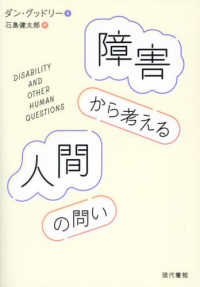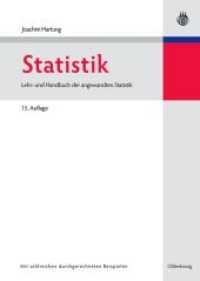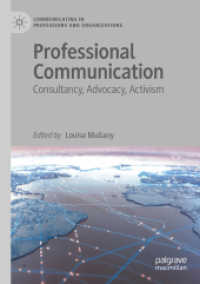- ホーム
- > 洋書
- > 英文書
- > Literary Criticism
Full Description
Paying attention to the uses that Anishinaabe authors make of visual images and marks made on surfaces such as rock, bark, paper, and canvas, David Stirrup argues that such marks—whether ancient pictographs or contemporary paintings—intervene in artificial divisions like that separating precolonial/oral from postcontact/alphabetically literate societies. Examining the ways that writers including George Copway, Jane Johnston Schoolcraft, Gordon Henry, Louise Erdrich, Gerald Vizenor, and others deploy the visual establishes frameworks for continuity, resistance, and sovereignty in that space where conventional narratives of settlement read rupture. This book is a significant contribution to studies of the ways traditional forms of inscription support and amplify the oral tradition and in turn how both the method and aesthetic of inscription contribute to contemporary literary aesthetics and the politics of representation.
Contents
Contents Acknowledgments Introduction Chapter 1. An Indian Well Versed: (Con)Textualizing Anishinaabeakiing—George Copway and Jane Johnston Schoolcraft Chapter 2. X-ing Boundaries: Transmotion, Transformation, and the Art of Engaged Resistance in Contemporary Anishinaabe Poetics Chapter 3. Reckoning Beyond the Crossing/X-ing: Formal Diversity and Visual Sovereignty in Gordon Henry Jr.'s The Light People Chapter 4. Picturing Absence and Postcolonial Presence: Unsettling a Colonial Grammar in Selected Works by Louise Erdrich Chapter 5. So, How Can You Hear Stones and Pictures? Gerald Vizenor's Imagic Returns Chapter 6. Performance, Resistance: Countering the indian and Sovereign Aesthetics in Contemporary Anishinaabe Drama Conclusion Notes Bibliography Index








